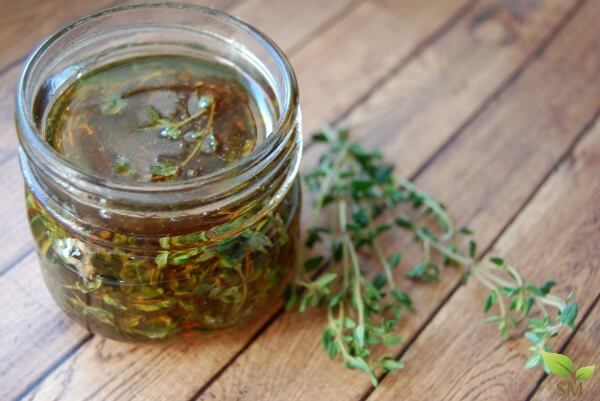
We know it as a period renowned for its innovation, while also instigating incredible violence against colonized landscapes and indigenous peoples across the globe. The Victorian period was one of enchantment for the upper classes of Britain. People of the medieval period also thought that thyme was a sleep aid and helped to ward off nightmares. If you are having trouble sleeping during this time of global pandemic and social upheaval (I mean, who isn’t) consider giving thyme a try. Thymol, the same chemical compound that provided relief for struggling families in Edinburgh in the middle ages can now be found in items such as mouthwash and hand sanitizer. We now know that thyme is a powerful antiseptic. In 1349 the Black Death ravaged parts of Europe and people turned to thyme for strength, protection, and relief. Thyme, unsurprisingly, is part of that ongoing story as well. Plagues and pandemics shape our world today, as well as throughout our recorded history. While they did not practice the embalming techniques of the ancient Egyptians, people still thought to aid those poor souls in making a transition to the afterlife. Some remnants of ancient Egyptian rituals may have carried over to the medieval folk knowledge as well. The herb was traditionally given to men going to battle and sometimes worn as a badge of honor. Thyme’s association with strength and courage endured into the middle ages as well. The Middle Ages of Europe – 400 CE to 1492 CE Unsurprisingly, it was a popular herb among emperors and politicians. Other times, individuals would take warm baths steeped in thyme to stop the effects of poison after accidentally consuming it. People ate thyme before and after meals to protect from poison. In this period of history, people also believed that thyme had strong protective qualities. Smelling burning thyme would evoke a feeling of courage for many people. Religious leaders would burn thyme in their temples, while ordinary folks did the same in their homes in order to purify the space and instill a feeling of strength and bravery. Soldiers would exchange thyme as a sign of respect. In the Roman era, folk wisdom strongly associated thyme with courage. Bodies were cleaned out of organs and then stuffed with spices like cinnamon, lavender, and thyme to combat the odor of decomposition. The ancient Egyptians equated scent with holiness and denoted status. Most people wouldn’t associate perfumery and the mummification process together, but they go hand-in-hand. Practitioners of this ritual also most likely incorporated thyme for its scent. Due to thyme’s high thymol content, it kills bacteria and fungus and would have been a helpful agent for this process. Historians of antiquity believe that the Ancient Egyptians used thyme for embalming. From that, we can imply that regardless of whether or not our ancient ancestors were using thyme to spice their poultry, they were at least aware of this herb’s medicinal power. The author of this script noted that thyme was an antiseptic. The earliest example we know of is dated back to ancient Sumeria – over 3,000 years ago. The use of thyme stretches all the way back to the beginning of written records. Creeping thyme is a popular ornamental addition to gardens for this very reason. Their scent wafts around as your feet brush past their leaves.

There is a wide variety of species, however, some of which are fragrant ground covers. The species of thyme most often used for these purposes is Thymus vulgaris.

This means it is also related to oregano. Thyme belongs to the Lamiaceae, also known as mint, family. People use thyme as a herbal addition to poultry, fish, stuffing, eggs, soups, pasta, etc.


It is native to Eurasia and now cultivated all over the world. While time itself is native to no single location as it is a “ nonspatial continuum measured in terms of events, ” thyme, the plant, is a bit easier to pin down. Whether you are using thyme in recipes, teas, using it as an antidote, or as a preventative health practice, you are part of a long lineage of folk knowledge, herbal medicine, and culinary tradition. It has shaped our lives in ways we may not even realize. Thyme is a perennial evergreen plant that weaves its way throughout our stories and rituals. This is as true today as it has been throughout history. Thyme is a beloved herb for many human beings on planet earth.


 0 kommentar(er)
0 kommentar(er)
